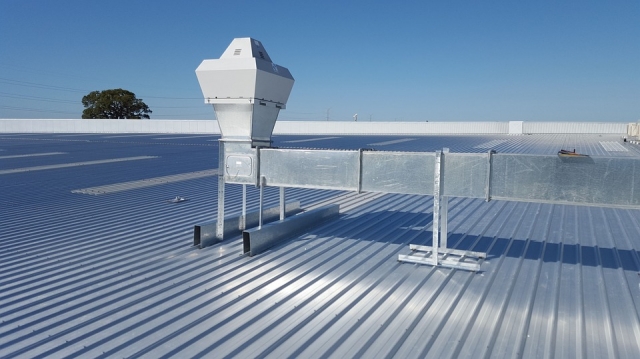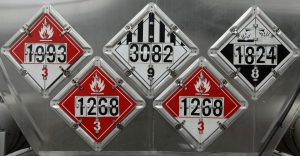Almost any industry needs to account for performance indicators to measure productivity. The HVAC industry is very competitive. If you check the market, you will notice a new company opening every other day. So, in such a competitive landscape, every business owner needs to track key performance indicators(KPIs).
KPIs help with assessing a business' current performance through different indicators. The finances of a business are important but other metrics can give you a complete picture. These include metrics that can provide you with information on various aspects of the company. This can be job performance, operation efficiency, and many more.
Traditional KPIs such as revenue, cash flow, and profit are very important. They help evaluate the success or failure of each company project. You can get the trends in operation costs and yearly revenue patterns that you can use to make executive decisions. So, let us dig deeper into these HVAC KPIs and how they can help your business grow.
Why Does Measuring HVAC KPI Matter?
HVAC KPIs help your HVAC business thrive in the digital business world. When you measure metrics like online visibility or competitive ranking, you can ensure that your company stands out.
Customers are almost always using the internet to search for HVAC services. So, proper SEO for HVAC can improve search visibility online. This way you can ensure that your business is always on the top of the list on a Google search. This will increase your chances of being seen, which in turn means more sales.
|
You can also use HVAC KPIs to boost your brand credibility. Building trust with existing and potential customers can help build a positive outlook for the company. Clients will have more confidence in your services over your competition if you're on top of search results. |
There will always be a high demand for HVAC services. So capitalize on this opportunity, and grow your business by monitoring and optimizing these KPIs.
So, how do you measure these KPIs?
How To Measure HVAC KPI? - A Simplified Checklist

HVAC KPIs can give you a picture of different aspects of your company's health. So, to boost your company in the market look to these metrics to measure KPI.
1. Advertising Return on Investment (ROI)

Advertisements online are the key to spreading the word about HVAC services. Monitor how well your ads are doing every month. Platforms like Google Ads, Facebook, and Instagram are great to boost your posts and services. Calculate your return on investment (ROI) by dividing the money you make from each campaign by how much you spend on ads.
See which platforms give you the best ROI, then put more money into those. This way, you'll bring in more customers and help your business grow steadily. Some examples of Advertising ROI can be cost per click, customer lifetime value, cost per lead, and conversion rates.
2. Company Profitability
Measuring company profitability can help you set goals to secure future growth. When you know the HVAC industry's profit margins, you can optimize our prices to improve your profits. Gross profit margins give insights into sales but this metric can give you a limited picture. Gross profit does not account for any operating expenses.
Here is where net profit comes in. The net profit margin deducts all costs associated with delivering products or services from the gross profit. These expenses can be materials, labor, and overhead used. So when you track net profit you get a complete idea of your business's financial performance.
Once you get these profitability measures in order you can make the right decisions to adjust your goals. You can get an idea of how to manage costs to maximize revenue growth. So getting a grasp of the the financial health of your HVAC business can ensure it grows in the long run.
3. Rate Of Customer Retention

HVAC businesses need to build and sustain customer loyalty for success in the long term. Repeat customers play a big role in generating revenue for an HVAC company. Customers act as brand ambassadors who can share their experiences to attract new business for the company.
Calculating the rate of customer retention is simple. You need to analyze the percentage of repeat customers within a specific timeframe. There are many ways you can keep attracting existing customers.
Try and use different marketing strategies to retain customers. You can send satisfaction surveys, follow-up calls, or loyalty incentives to add value. Through surveys, you get an idea of customer preferences and complaints. Only when you can address these in time, you can improve retention rates and help your company grow.
4. Manage Operating Costs

When running an HVAC business, investing in the business does not mean only improving the product or service. To keep your prices competitive, you need to keep track of all your operational costs. These can be vehicle maintenance, office supplies, utilities, and overhead expenses.
If you do not check these costs, company expenses may surpass its income causing a loss. So audits on exact spending and income can give you a better picture of how well your HVAC business spends. Try to keep your operational costs as low as possible to optimize long-term profitability.
5. Job Locations

The more productive your company is the more you can provide your service where it needs it the most. Before setting your goals, it is best to research where HVAC services have high demand. Optimizing your business according to the location will boost sales.
It is best to concentrate on locations with high population density. this way you can cut travel time between appointments and optimize technician schedules. Additionally, you can also invest in specific software to streamline your operation. You have more control over your employee and client routines.
Specialized software can give you real-time updates on the scheduled jobs. By tracking reschedules or cancellations in real time, you can prevent any time wasted. This way the business can better divide time to other jobs. As a result, you have a higher potential of converting to a potential sale.
6. First-Time Fix Rate

The whole nature of the HVAC industry is that services need to be fast. Time and efficiency go hand in hand, so response time is an important metric to measure. First-time fix rates are also important in an HVAC business. They help understand how fast your business responds to customer complaints.
When services reach the customer in the least amount of time, the customer will be more satisfied. It will also add weight to your brand value. You can increase the number of service tickets completed per day with a fast response time.
Set targets for query response within a timeframe. Tracking the first-time fix rate can help you understand how quickly your team responds and solves a customer problem. A high first-time fix rate means that the company is running efficiently with little to no downtime per service.
7. Employee Productivity

A company cannot run efficiently if its employees are not working at their best. Employee productivity has a direct impact on an HVAC company's overall performance. Tracking employee productivity can give a clear understanding of how well they are performing as a team.
These metrics include the average time of service calls, travel time, and production time. Addressing these metrics can help you figure out any area of improvement for your workforce. You can identify inefficiency and improve scheduling to utilize the expertise of your workforce in the best possible way.
To improve the team, you can also introduce extra value-added services to your employees. These can be in the form of training programs, staff-level, or a more refined work process. When your team is working at its peak, your HVAC company will see a guaranteed rise in profitability month to month.
8. Service Metrics

Credit: Miracle Service
Service metrics can help you make strategic moves in service delivery to your customers. With these metrics, you get insights into customer buying trends. With this, you can design campaigns to meet a growing customer demand for your services.
These metrics include:
- Average revenue generated per job
- Revenue per lead
- Number of service calls completed per day
- Frequency of specific services sold in a month
Conclusion
HVAC KPIs are a great way to check how well your business is doing overall. These are important metrics that all business owners must look into to ensure efficiency. Once you get a hold of these metrics, you can better tailor your service and boost your profits.






